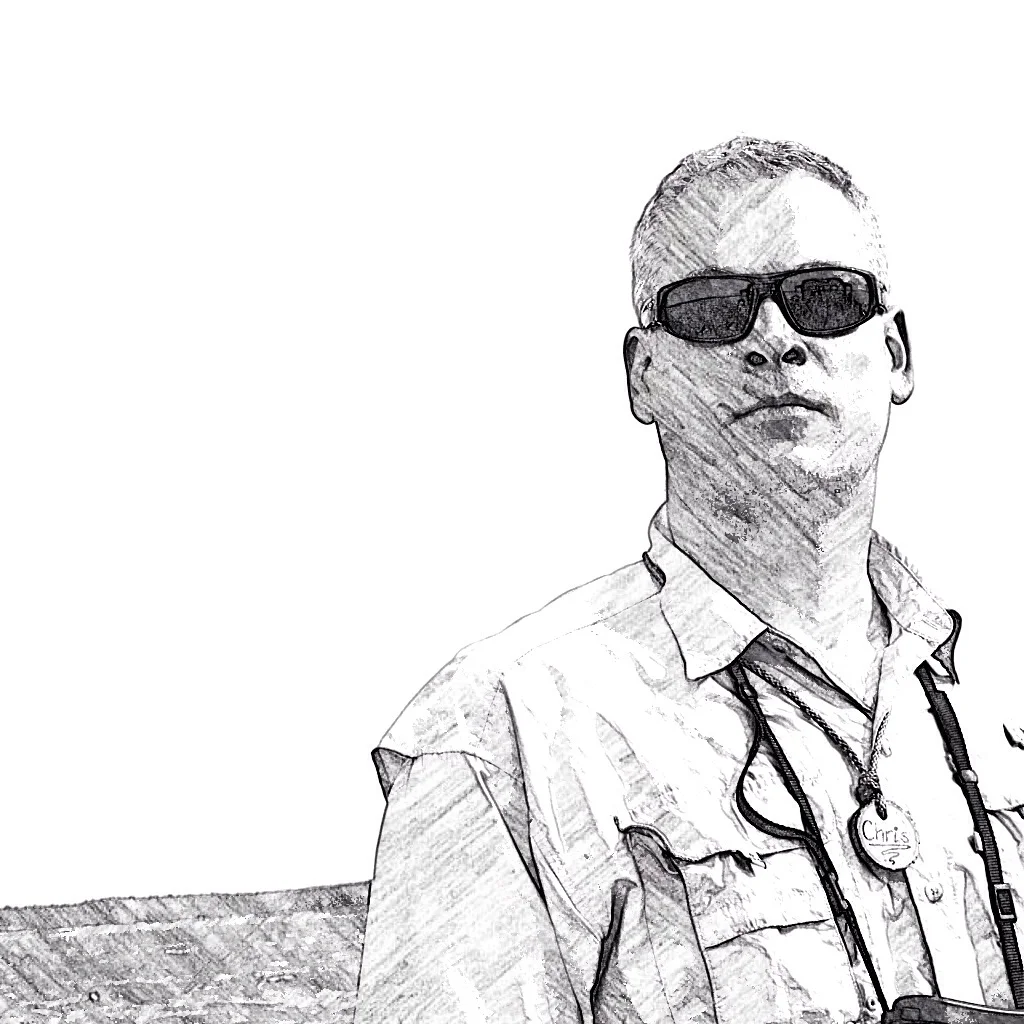I grew up with the saying ‘there’s no poor weather, only poor clothing’. So what is good clothing for long sessions of outdoor summer birding?
It is All Personal
Maybe obvious, but clothing is very personal. We advertise our personalities with clothing. Here we might advertise our birding personalities rather than our city credentials. I’ll leave this aspect of clothing to the side. Just ask my wife, I have nothing worthwhile to say in this department.
Requirements
So forget about fashion and focus on what makes for enjoyable birding with minimal distractions. When buying clothing, I keep these aspects in mind:
- Travel friendly
- Terrain
- Weather
- Noise
To me, travel friendly applies even when I’m doing local birding. Clothing must be light, adaptable to changing conditions, and be comfortable to the point I can forget it is there. If I am traveling, especially by air, it needs to hide wrinkles, hide dirt, and pack into minimal volume. If it does become dirty, I should also be able to wash it in a stream or hotel sink and be ready to go the next morning.
Terrain and weather can mean an ocean beach with sand, sharp blades of grass, and biting greenhead flies zooming through blistering sunshine; swampy paths through a bog inhabited by millions of mosquitoes loving the humid air; and flash thunderstorms with horizontal rain and gusts as you finally reach the peak during your all day hike. These are extremes, but I have been through all of these situations.
My final consideration is noise. If the clothing I’m considering swishes, squeaks, or chips, it will be a tough sell.
Of course, this is a sliding scale. If I’m only out for a few hours, most anything goes. For example, I might have to go straight to work after a morning walk. My priorities shift and all clothing need to do double-duty between reasonable comfort and office-worthiness. The rest of this article assumes we are aiming to do some focused birding.
Feet
Feet are most important. For me, unhappy feet means heading back home. There are two things to consider: shoes and socks. My go-to choice is mid-height hiking boots. They are comfortable; can be waterproof; handle hot temperatures pretty well; support my ankles when balancing on rocks; and protect my feet from rocks, glass, and sharp vegetation. When shopping for your first pair of hiking boots, visit a store. You need to figure out which brand uses a last (model of a standard foot) that fits your feet. After you have figured that out you can resort to online stores if needed.
Many hiking boots come with a waterproof membrane, usually Gore-Tex. This works reasonably well. My experience though is that the membrane starts to leak after a few years. Instead of buying new boots, try using Nikwax or similar treatment.
In specialized situations like deserts and ocean beaches, I might switch to hiking boots with mesh instead of leather and sandals, respectively. In deserts, I am more concerned about temperature than water. On a sandy beach, sand cannot collect in my shoes and I should be able to wade into the water. Again, remember that I’m focusing on all day birding. If I’m only out for an hour, any shoes will work.
Assuming we have our hiking boots selected, we need good socks. They need to wick sweat away to keep my feet dry, be as cool as possible, and if possible be odor free. Stinky feet don’t make many friends. I’ve had decent luck with thin SmartWool socks but my favorites are Darn Tough socks. They are cooler and last longer.
Oh, and one more tip. Shoe laces are going plastic. While they tend to last longer, this also means less friction and higher risk of them coming untied. Double-knots are fine but they are a pain to untie. Check out this website for a better version. It is easy to do, stays secure, and is easy to untie. www.fieggen.com/shoelace/secureknot.htm
Legs
My legs can endure a lot of abuse. Hence clothing for my legs is less important. Still, I like a good pair of cargo pants for insect, brush, and sun protection and transporting stuff. The pants need to be some kind of artificial material to wick sweat and become light. Watch out for swishy fabrics though. Enjoying quiet is a big reason for me to be in nature to begin with.
Just having long pants instead of shorts goes a long way to handle ticks. Adding a Permithrin treatment tends to take care of it completely. It also helps with mosquitos. A common suggestion is to tuck my pant legs into my socks. That is one step too nerdy even for me.
Pants tend to get dirty easily so the color should preferably hide dirt. After treating them with Permithrin I don’t want to wash them too often either.
Extra pockets are convenient. Cargo pockets for notebook, pencil, tissues, cables, and so on; a zippered pocket to keep my car keys with me; and maybe even a secure pocket on the inside of the pants to make life harder for pick-pockets are all good things.
I thought I would love convertible pants, where you can make long pants into shorts with a zipper on each leg. I rarely use that functionality. Maybe because I’m lazy or I like the sun protection long pants offer.
Torso
This is an important part of my body. Too hot or too cold and I might turn too grumpy to enjoy a full day of birding.
A decent pair of underwear goes a long way. The recurring theme of wicking material, easy to wash, and having an odor shield applies here too. I have had good luck with ExOfficio. Even if they might be a bit warmer, I prefer boxer models since they reduce friction at a critical part of my body. If you have ever had friction burns on your thighs, you know what I’m talking about.
Since we are talking about summer clothing, next is a long sleeved shirt. My priorities are cool and sun protection. A couple of pockets never hurt but I can do without. To me, short sleeved shirts are hotter than long sleeved ones as they expose my arms to the sun. If I want to go short sleeved, it is easy enough to roll up the sleeves for a while.
Features that help with temperature are fabrics, wind slits, and color. Artificial materials rule when wicking sweat away. The only downside is if you will work with open flames; artificial materials will melt to any burns. The more air can circulate against your body, the cooler you will feel. Wind slits help accomplish this. My last consideration is a lighter color. Just seeing a safari type khaki makes me feel cooler. The best solution I’ve come across are various types of fishing shirts. My personal favorite is Columbia’s PFG Bahama shirt. Critically, for me, they come in tall models.
For specialized situations, I’d add a rain jacket (also serving as a wind breaker) and a thin fleece jacket. These come in handy on the ocean, on a windy mountain top, or even to dampen the morning chill.
Head
Last we come to the head. We will cover eyewear, hats, and sunblock.
While not exactly clothing, eyewear is the most critical part for an enjoyable day birding. If you have perfect vision, congratulations, all you might need is a pair of sunglasses. Sunglasses are good when looking at the sky. You will really notice a difference when being close to water. I also like them for wind protection. Polarized glasses with a copper tint are a favorite among fishermen. They work well for birding too. Models with wide temple arms limit stray light from the sides. Lenses that curve with your head will block even more sunlight but are harder to make well. You will want decent lenses to avoid distortion. The best I’ve found are Smith Optics. They are sold at fishing stores.
If you need glasses as I do, consider contact lenses for birding. Contacts completely alleviate the problem of fogging during humid days.
Our heads take the full brunt of the sun. Sunblock and or a hat can be anything from helpful to critical. I know little about what sunblock to use but I look for a version that is waterproof (to stay put) and have a high sun protection factor. I keep hearing different stories about the efficiency of sun blocks but I do have painful memories of missing to put it on parts of my body. When I use sunblock, I try to remember some key areas: my ears, nose, under my eyes, and my neck. Even though I still take some pride in having the binocular strap burned into my neck.
A hat can be a good complement to sunblock. If it is going to be of any use as a sunblock, it needs to be wide brimmed to cover your ears, nose, and neck. Features I look for in a hat are:
- Ventilated top to help with temperature
- Crushable to allow me to pack it for trips
- String to hold it in place when it is windy
- Some degree of tolerance to rain
My current summer hat is a canvas model from Barmah. Because of the mesh crown, it works so-so for rain and can be downright terrible if there are mosquitoes around. For rain, I use an Outdoor Research hat. Some models are too hot to use during the summer so look for the thinnest possible.
While you won’t win any fashion competions, you will be able to enjoy your birding during most any weather with these ideas. There are additional topics to cover like backpacks, orthotics, and more specialized insect clothing but this should get you started. As always, I’m curious what you have found to be good. Drop me a line at newsletter@lvaudubon.org.
Chris Hugosson

